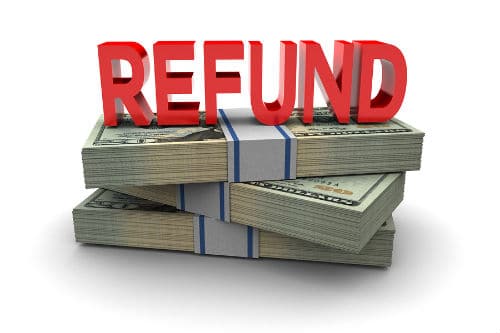Question: One of my readers wanted to know whether or not they should use their tax money to pay off all of their debt, or perhaps some of their debt and put the other half in savings.
Answer: Basically, I think it’s not a good idea to use an income‑tax refund check exclusively to pay off credit‑card debt. And here’s why.
The IRS says that the average tax refund check is about $2,800 in 2010. That’s a big chunk of money, and I know that folks who are grappling with credit‑card debt might be thinking, “Hey, maybe I’ll knock out all of these credit‑card bills,” especially considering that the average US household has about $10,000 in credit‑card debt.
The problem, however, with using a tax refund check to pay off debt exclusively is that you put yourself at risk if you have absolutely no savings.
I’m always stressing to consumers that it’s a good idea to have at least a three‑month cash cushion. And by that I mean you should have three months’ worth of expenses set aside to deal with any kind of an emergency.
So if, for example, your bills each month are, let’s say, $2,000, ideally you should have $6,000 set aside to deal with an emergency. And that’s where your savings’ cash cushion comes in to help you with those.
You’re not going to get that cash cushion to the three‑month level overnight, but certainly, using a chunk of it from it an income‑tax refund check could be a great way to do it.
So my advice would be, if you want to devote the entire 100 percent of your tax refund check to a positive use, go ahead and pay off perhaps half of it in the credit‑card debt, to knock out some of those high‑rate bills that you might be grappling with, and then put the other half in savings.
That way you’ll know that that income‑tax check that you received was very well spent.










